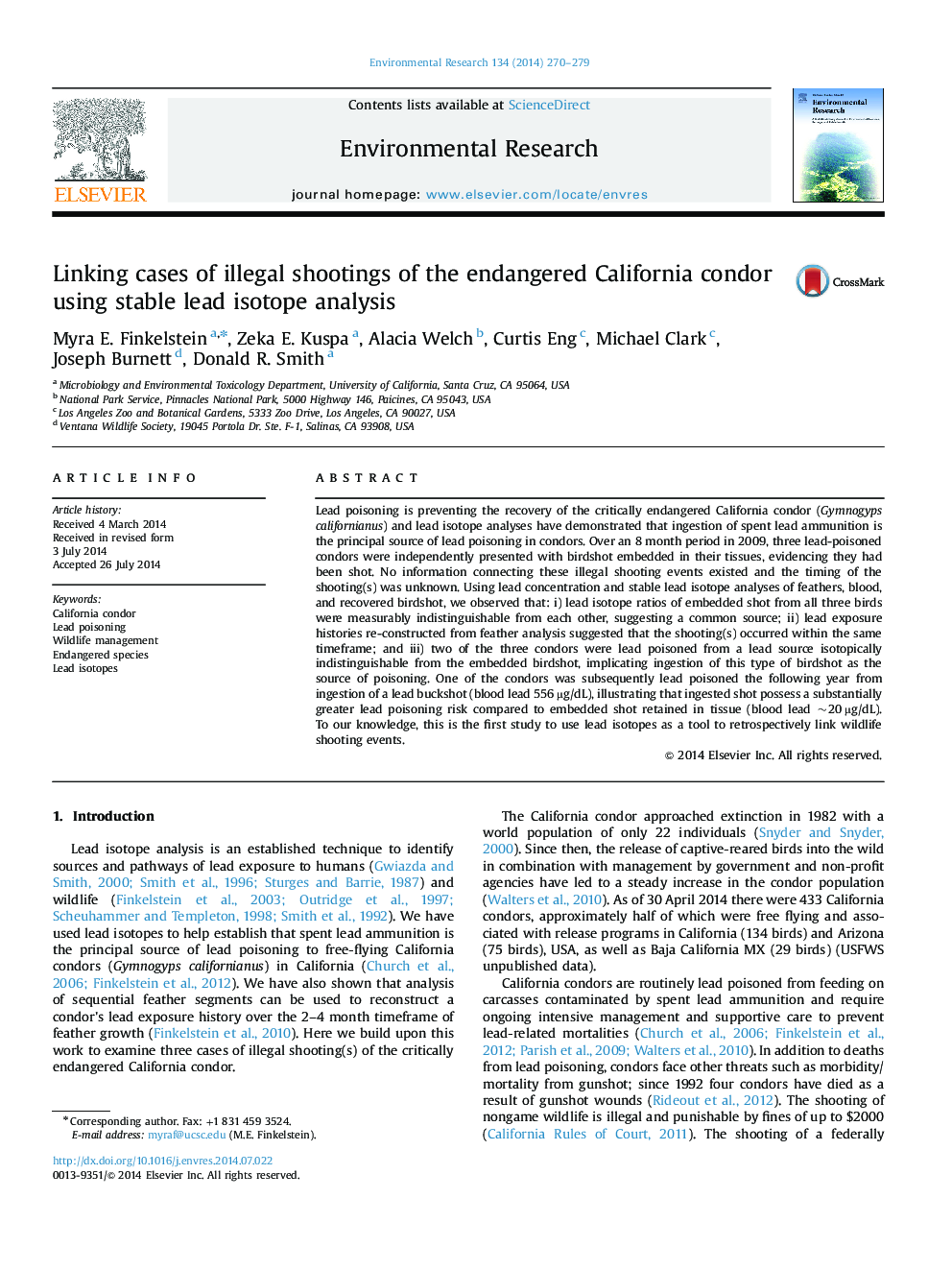| کد مقاله | کد نشریه | سال انتشار | مقاله انگلیسی | نسخه تمام متن |
|---|---|---|---|---|
| 6352577 | 1622567 | 2014 | 10 صفحه PDF | دانلود رایگان |
عنوان انگلیسی مقاله ISI
Linking cases of illegal shootings of the endangered California condor using stable lead isotope analysis
ترجمه فارسی عنوان
پیوند موارد تیراندازی غیرقانونی کاندور کالیفرنیا در معرض خطر با استفاده از تحلیل پایدار ایزوتوپ پایدار
دانلود مقاله + سفارش ترجمه
دانلود مقاله ISI انگلیسی
رایگان برای ایرانیان
کلمات کلیدی
موضوعات مرتبط
علوم زیستی و بیوفناوری
علوم محیط زیست
بهداشت، سم شناسی و جهش زایی
چکیده انگلیسی
Lead poisoning is preventing the recovery of the critically endangered California condor (Gymnogyps californianus) and lead isotope analyses have demonstrated that ingestion of spent lead ammunition is the principal source of lead poisoning in condors. Over an 8 month period in 2009, three lead-poisoned condors were independently presented with birdshot embedded in their tissues, evidencing they had been shot. No information connecting these illegal shooting events existed and the timing of the shooting(s) was unknown. Using lead concentration and stable lead isotope analyses of feathers, blood, and recovered birdshot, we observed that: i) lead isotope ratios of embedded shot from all three birds were measurably indistinguishable from each other, suggesting a common source; ii) lead exposure histories re-constructed from feather analysis suggested that the shooting(s) occurred within the same timeframe; and iii) two of the three condors were lead poisoned from a lead source isotopically indistinguishable from the embedded birdshot, implicating ingestion of this type of birdshot as the source of poisoning. One of the condors was subsequently lead poisoned the following year from ingestion of a lead buckshot (blood lead 556 µg/dL), illustrating that ingested shot possess a substantially greater lead poisoning risk compared to embedded shot retained in tissue (blood lead ~20 µg/dL). To our knowledge, this is the first study to use lead isotopes as a tool to retrospectively link wildlife shooting events.
ناشر
Database: Elsevier - ScienceDirect (ساینس دایرکت)
Journal: Environmental Research - Volume 134, October 2014, Pages 270-279
Journal: Environmental Research - Volume 134, October 2014, Pages 270-279
نویسندگان
Myra E. Finkelstein, Zeka E. Kuspa, Alacia Welch, Curtis Eng, Michael Clark, Joseph Burnett, Donald R. Smith,
